Tara Pacific (2016-2018), the unique biodiversity of coral reefs
[A look back at the results of Tara's scientific expeditions] The Tara Pacific expedition spent 2 years criss-crossing the Pacific to study its fascinating coral reefs. Tens of thousands of samples were collected and analysed by the partner laboratories. (Re)discover in this article the important results published on these essential ecosystems. This article is part of a series looking back at the scientific results of Tara's expeditions since 2006.
See the first 2 articles :
Tara Arctic (2006-2008), the transpolar drift – Tara Oceans (2009-2013), the invisible people of the Ocean
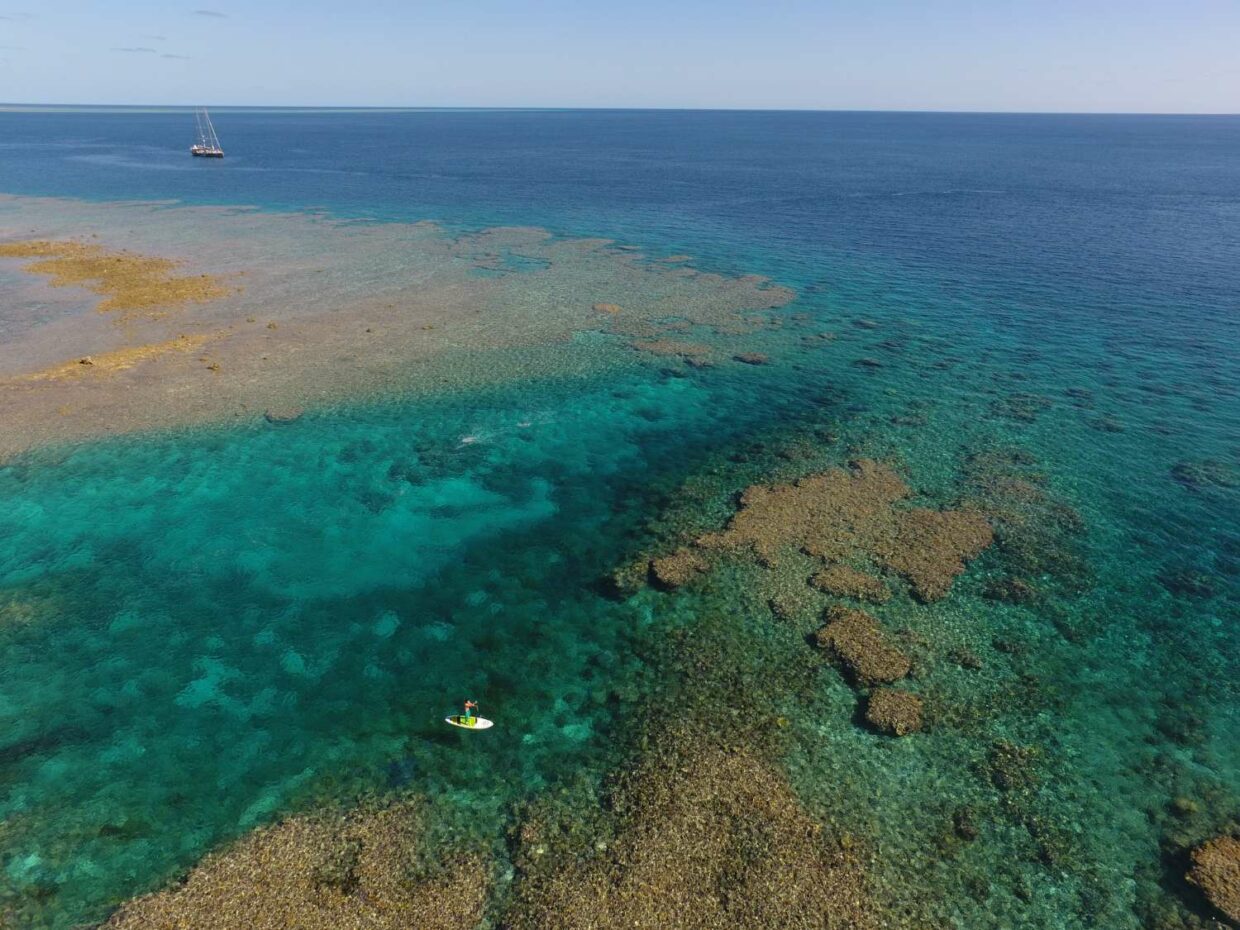
Why should we study coral reefs ?
What is coral?
Coral is actually made up of an animal, a polyp resembling a tiny anemone with a body and tentacles arranged around a ‘mouth’. Its tissues house a symbiotic micro-algae called zooxanthellae, which provides it with 80% of its energy through photosynthesis and is responsible for its bright colours. The polyps and zooxanthellae live in symbiosis: the CO2 released by the polyps is absorbed by the micro-algae, which produce oxygen and waste products that feed the polyps… In other words, these two living organisms are biologically associated in a lasting and mutually beneficial alliance.
An essential role for the entire ecosystem
Corals live in colonies and by associating with each other, they build a rigid calcareous skeleton at their base, forming coral reefs. These underwater structures provide a habitat for many other species. Corals are therefore key founder species: coral reefs serve as primary producers and feed an entire ecosystem.
Coral reefs are essential to life on our planet. They cover less than 0.2% of the ocean’s surface but are home to more than 30% of the marine biodiversity known to date. They are known as biodiversity hotspots.
They also provide numerous ecosystem services to humans, valued at 30 billion dollars a year: they provide jobs, act as a shield against erosion by attenuating the force of the waves, shelter fish that feed people, attract tourists.). Five hundred million people around the world depend directly on coral reefs.
However, coral reefs are in danger: at least 20% of reefs are already dead. And if nothing changes, more than half of them will die within the next few years.
The Tara Pacific expedition was launched with these findings in mind. For two and a half years, between 2016 and 2018, the Tara schooner sailed to inspect coral in the world’s largest ocean basin, the Pacific.
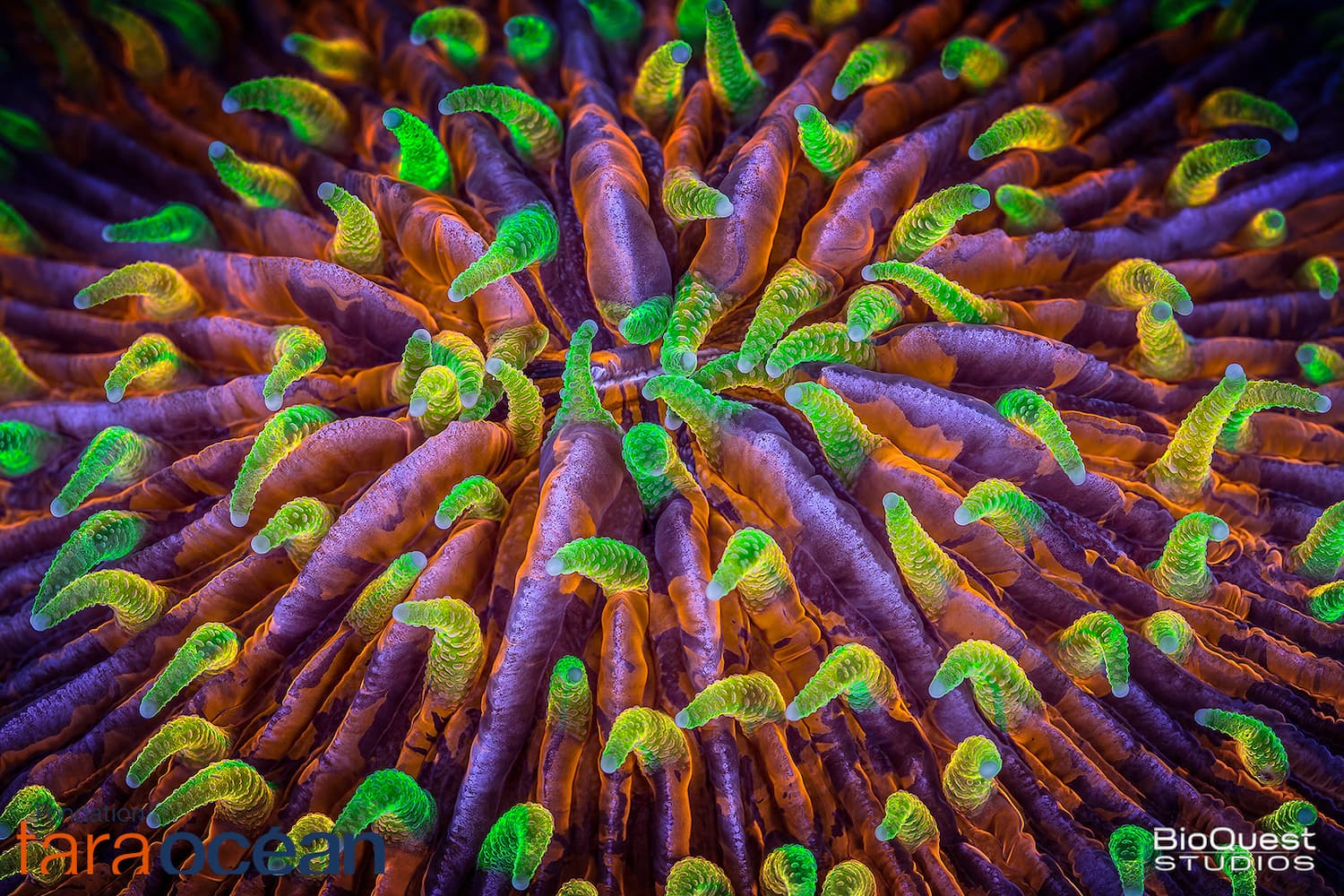
A better understanding of a biodiversity in need of protection
The results of the Tara Pacific expedition were published in 2023, including several papers in the world’s leading journal Nature Communications. The results focused on three aspects: the validity of the protocols developed, and therefore of the data collected for the expedition, the understanding of the coral holobiont, meaning the coral and its entire microbiome (i.e. micro-organisms and their genes living in the coral ecosystem), and the influence of the environment on the reefs.
An open-access and unique database
Tara Pacific is an exceptional adventure because of its pan-ecosystemic approach: all ecosystem components, from viruses to fish, are sampled on all coral reef complexes in the Pacific Basin. By applying genetic analysis methods to this ecosystem, Tara Pacific’s methodology is similar to that of so-called environmental DNA protocols. After several years of scientific validation of the protocols, the nearly 200 scientists involved in the expedition have consolidated a unique database, both in terms of protocols applied and of richness of content. It includes data from :
- 58,000 samples
- 12, 193 photographs
- 102 sites
- 32 islands
Within this database, each sample is annotated with the environmental context in which it was collected (geospatial, temporal and methodological information).
Apart from the completeness of this data, the key aspect is that it is now openly available to the entire scientific community, and represents a unique heritage that Tara Pacific is sharing.. The fact that what could be described as a “genetic library of the coral reef ecosystem” has been made freely available as soon as the protocols have been validated, and the level of detail provided in addition to the raw data, means that it can be used by researchers from all over the world. This open-access library will ensure that the full potential of these samples will be exploited.
Fifteen years after their publication, the Tara Oceans mission databases continue to fuel the research work of scientists from all over the world. In fact, half the scientific articles published and citing this database have been published by scientists from outside the Foundation’s partner laboratories. We can only wish the same future for the Tara Pacific dataset, a true gift from the expedition to the global coral reef scientific community.
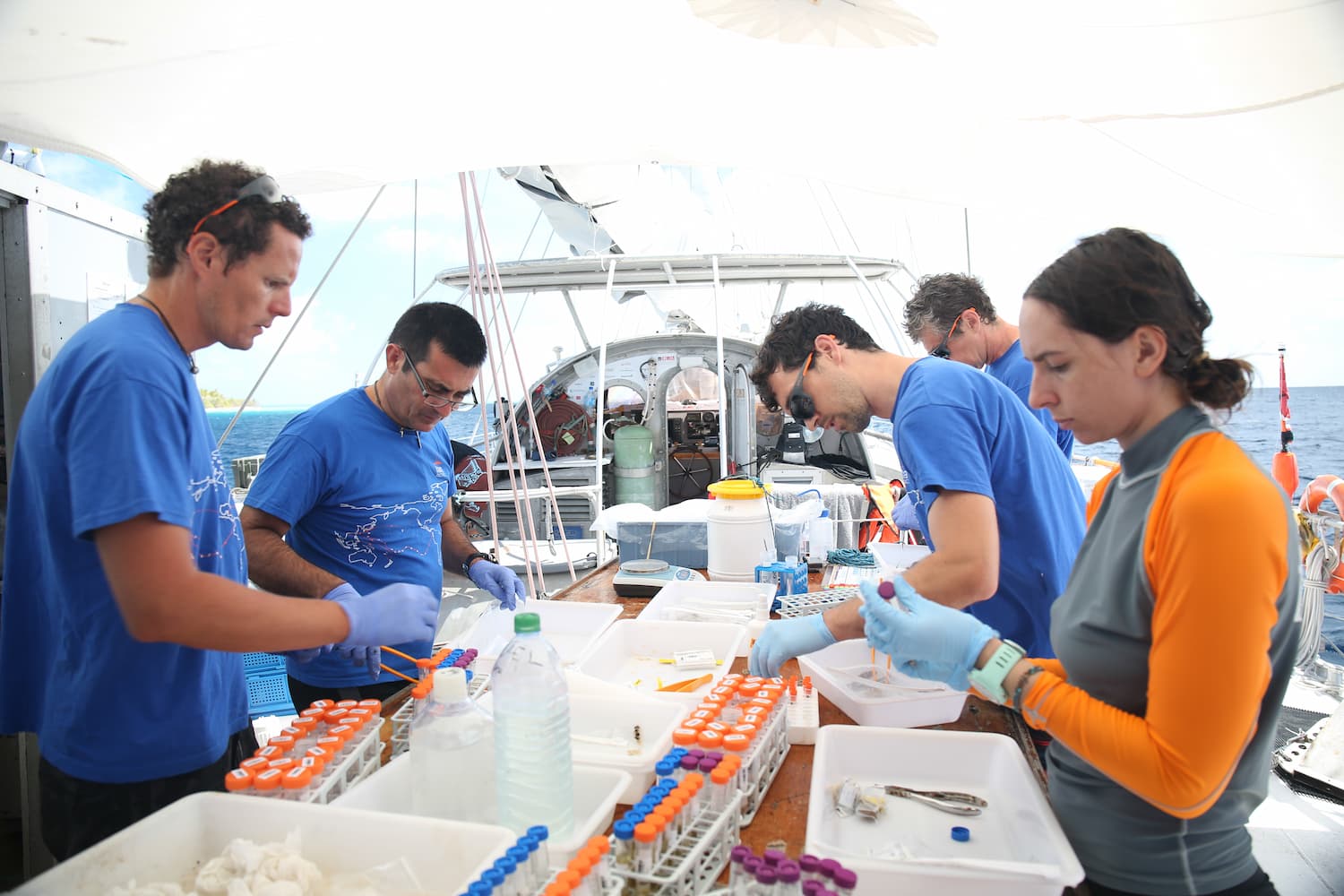
Improving our understanding of coral genomic complexity
By applying genetic protocols to the microscopic biodiversity of coral reefs, Tara Pacific is studying a poorly-understood aspect of these ecosystems. From the data analyzed, scientists have extracted many keys to understanding how the coral holobiont functions.
Looking first at the diversity of the coral microbiome at the scale of the Pacific basin, the researchers investigated whether this diversity of the coral microbiome followed that already observed at the scale of coral species. Indeed, coral biodiversity is at its highest around the “Coral Triangle”, a geographical area including Malaysia, Indonesia and the Philippines. This diversity then decreases as one moves westwards towards French Polynesia, or northwards towards Japan.
Conversely, the results indicate that coral microbiomes do not follow the expected pattern of greater diversity in the Western Pacific. Nor was there any significant correlation between seawater temperature and microbiome diversity.
- A new estimate of the world’s microbiome biodiversity
At a time when climate change is threatening coral reefs with a major loss of biodiversity, the challenge of monitoring the evolution of this biodiversity is essential. While Tara Pacific does not provide temporal monitoring, as each site is sampled only once at the time of the schooner’s passage, the expedition did offer the opportunity to assess microbial biodiversity within Pacific coral reefs, with reefs more or less degraded by the impacts of human activities. And the results are breathtaking. Their samples include 2.87 billion genetic sequences, some 25% more than the 2.2 billion samples previously reported by the Earth Microbiome Project, a project estimating the microbiome diversity in the entire world. Thus, Tara Pacific suggests that the Earth’s microbial diversity is vastly underestimated.
Publications have also focused on a widespread family of marine bacteria associated with the coral host, the Endozoicomonadacae. Behind this unattractive name lies an organism essential to coral survival. Each coral species studied associates with different species or genetic lineages of bacteria. In fact, Tara Pacific has identified three new species. More surprisingly, while several species of Endozoicomonadacae exist, these species are ubiquitous, found throughout the Pacific basin. Their distribution thus depends on the coral species present. Associated with the coral host, the bacteria provide it with vitamins, amino acids and proteins. In return, the bacteria also benefit from molecules secreted by the host. This surprisingly high bacterial diversity now needs to be considered within a functional framework to better understand its role in coral functioning and thus its role in resistance to global warming.
- New protocols to better understand coral responses to stress
Beyond the results, the Tara Pacific publications also validate the protocols that researchers had to develop to analyze the coral metabolome. The metabolome is the set of molecules produced by an organism in the course of its metabolic activity. It therefore provides information on the biological functioning of the coral, but also on its state of health. A change in the metabolome can indicate a disturbance in the coral’s environment. Understanding these biological mechanisms is therefore key to identifying future indicators of coral health, rather like a health record. This is where Tara Pacific has made its contribution: the metabolites (molecules making up the metabolome) are specific to each species. But above all, the results show a temperature-dependent variation. A rise in temperature causes a change in metabolome composition. In bleached corals, one family of molecules, glycerolipids, is strongly affected and present in very low quantities.
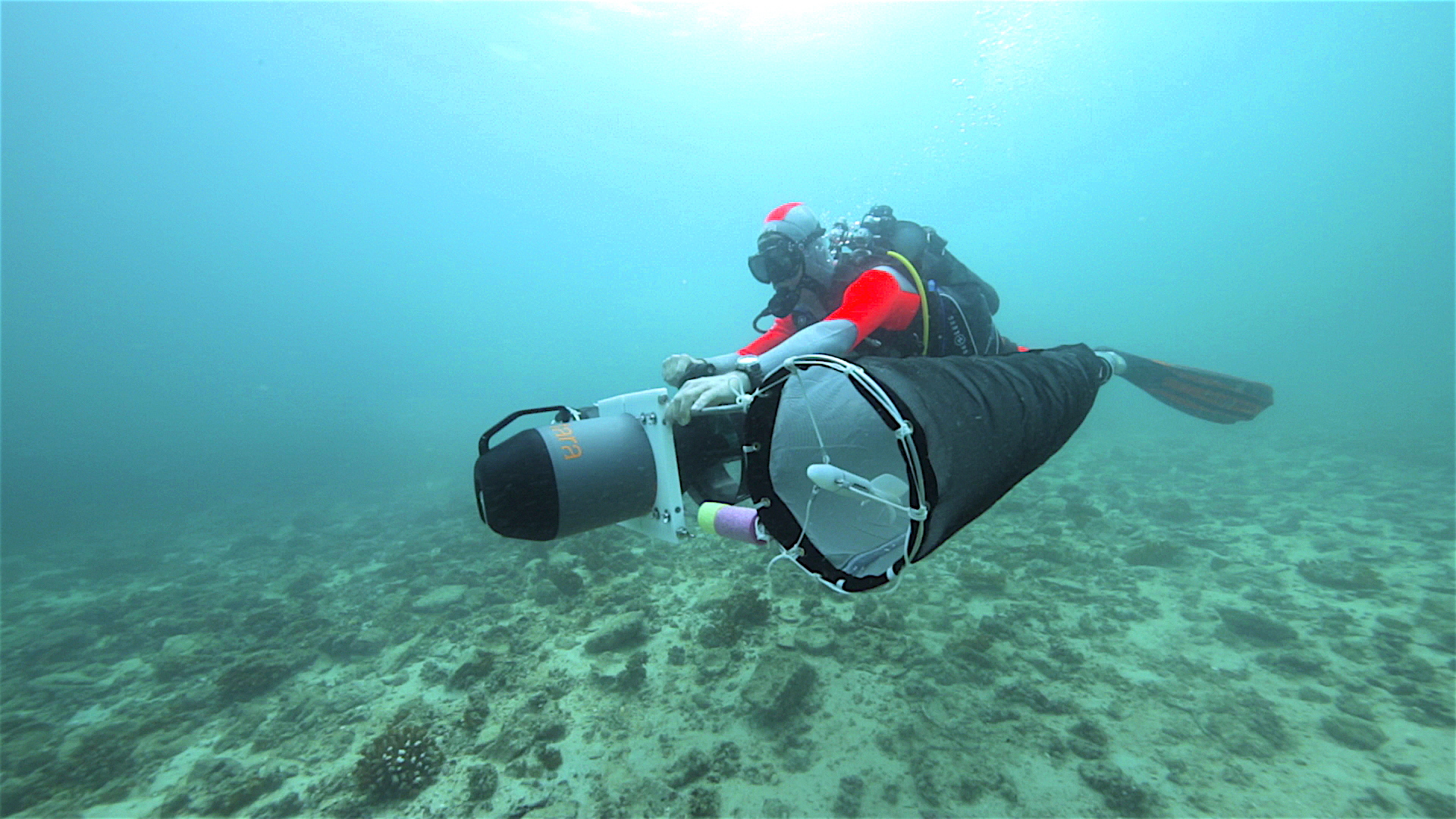
Explaining the interaction between coral and its environment
The use of genetic protocols improves our ability to understand the functioning of the coral holobiont, the species present, their functioning and their interactions. The use of genetic protocols improves our ability to understand the functioning of the coral holobiont, the species present, their functioning and their interactions. But carrying out a mission on the scale of an ocean basin, in extremely varied environmental contexts, has also enabled us to study the impact of the environment on corals.
The impact of temperature on coral morphology
Coral morphology is determined by two factors: the individual’s genetics and environmental conditions. The more dominant the genetic factor, the more resistant the coral is to environmental variations. This genetic/environmental balance is specific to each species. Tara Pacific has demonstrated a weaker environmental influence in corals from type Porites, a massive coral species. Conversely, corals of the Pocillopora genus show a very strong imprint by environmental conditions. These discoveries had already been observed in the field, but Tara Pacific‘s data provide unprecedented precision and a functional understanding of these findings.
Towards accelerated coral aging ?
The study of coral telomeres, the ends of chromosomes, also tells us about the history of these organisms and their environment. Telomeres are the memory of living organisms, bearing witness to the stress factors to which corals may be subjected. They also determine development programs and vulnerability to certain diseases. Tara Pacific’s analyses revealed a surprising result: telomere length is strongly determined by the coral’s environmental context, particularly temperature. However, species vary in their sensitivities: short-lived corals, for example, are particularly sensitive to changes in temperature. At a time when the sustainability of corals is already under serious threat, this major finding raises questions about the potential effects of an increase in ocean surface temperature on the accelerated aging of corals as a whole.
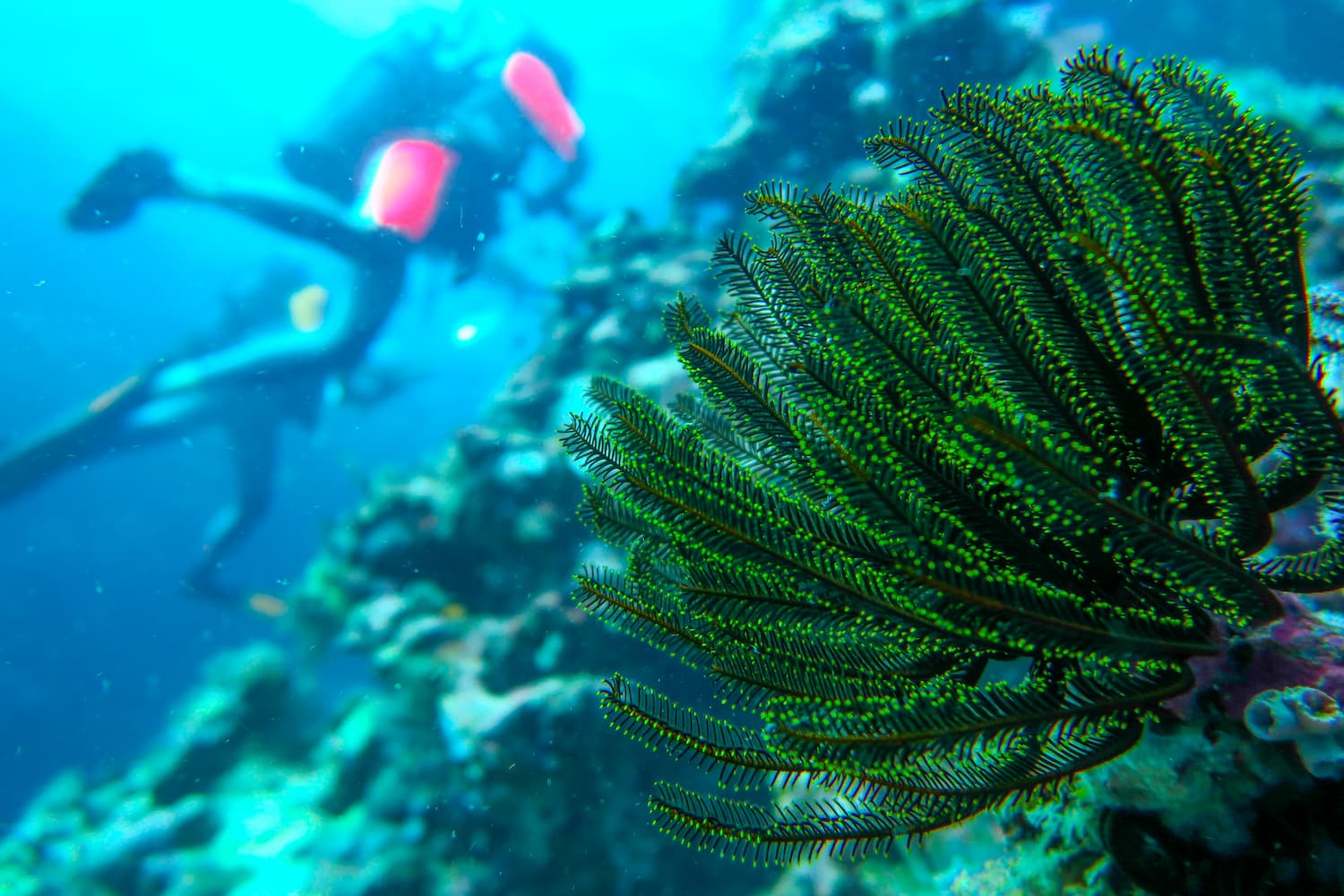
Changing partners for better adaptation?
While some results give cause for concern, others offer hope for a better understanding of the adaptive capacity of certain species. Reef resistance depends not only on the resistance of the host, but also on the composition of its holobiont. To adapt to temperature changes, some coral hosts are able to modify their symbiont composition to accommodate symbionts that are more resistant to higher temperatures. A coral host’s loyalty to a more vulnerable symbiont can therefore be a hindrance to its ability to adapt. Tara Pacific shows that Pocillopora corals in warmer regions are already showing changes in their preferred symbionts.
These initial results will be followed by many more, as the database opens the door to virtually unlimited research topics. While they already give us a clearer picture of how the reefs work, the databases could soon reveal potential answers to the questions that climate change poses for the sustainability of the reefs.
The Tara Ocean Foundation would like to thank all the partners who made this expedition and its results possible:
French National Centre for Scientific Research (CNRS), Paris Science Lettre (PSL), Monaco Scientific Center (CSM), École Pratique des Hautes Études (EPHE), Genoscope – National Center of Sequencing, the French Alternative Energies and Atomic Energy Commission (CEA) (CEA), Institut National de la Santé et de la Recherche Médicale (Inserm), Université Côte d’Azur, Agence Nationale de la Recherche (ANR), Agnès Troublé said agnès b. , Étienne Bourgois, the UNESCO Intergovernmental Oceanographic Commission (UNESCO-IOC), the Veolia Foundation, the Prince Albert II of Monaco Foundation, Région Bretagne, Billerudkorsnas, AmerisourceBergen Company, Lorient Agglomération, Oceans by Disney, L’Oréal, Biotherm, Capgemini Engineering, France Collectivités and the French Facility for Global Environment (FFEM).